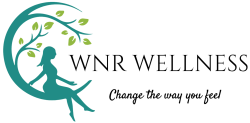Craniosacral therapy is an alternative treatment typically used by osteopaths, chiropractors, and massage therapists.
It claims to use a gentle touch to manipulate the joints in the cranium or skull, parts of the pelvis, and the spine to treat disease.
Craniosacral therapy (CST) was developed in the 1970s by John Upledger, a doctor of osteopathy, as a form of cranial osteopathy.
While CST has many followers and is used to treat several medical conditions, it has received much criticism. In this article, we look at both sides of the debate to help people understand the potential risks and benefits of CST.
What is craniosacral therapy?

CST is a non-invasive, hands-on therapy that aims to enhance the body’s own healing capabilities.
According to the Upledger Institute, CST uses a touch of under 5 grams to “release restrictions in the craniosacral system to improve the functioning of the central nervous system.”
This light touch is said to affect the pressure and circulation of cerebrospinal fluid, which is the fluid around the brain and spinal cord. This process is thought to relieve pain and dysfunction.
Practitioners claim that CST can be carried out as a standalone treatment or used in conjunction with medical or other alternative therapies.
Uses

CST has been used to treat a variety of conditions, both physical and psychological.
The Upledger Institute lists the following disorders as suitable for treatment with CST:
- Alzheimer’s disease
- autism
- back pain
- brain injury
- central nervous system disorders
- chronic fatigue
- colic
- concussion
- dementia
- fibromyalgia
- immune disorders
- learning disabilities
- migraines
- neck pain
- post-traumatic stress disorder (PTSD)
- scoliosis
- spinal cord injury
- stress
Effectiveness: Does it work?
Very few studies have been carried out on the use of CST in the treatment of illness. The research that has been undertaken is discussed below.
Research supporting CST

The following studies indicate benefits of CST for some conditions:
- A 2010 study examined the effects of CST on people with fibromyalgia. A total of 92 people with the condition received either CST or a placebo therapy for 20 weeks. Results showed that those who underwent CST experienced improvements in medium-term pain.
- Another study on CST and fibromyalgia suggests the therapy may reduce anxiety and improve quality of life in those with the condition.
- A study on the impact of acupuncture and CST on adults with asthma reported that both therapies had potential benefits when used alongside conventional asthma treatment. However, combining CST and acupuncture showed no benefit over using either therapy alone.
- According to a 2009 study, CST may improve both quality of life and the ability of people with multiple sclerosis who have lower urinary tract symptoms to empty their bladder.
Research criticizing CST
On the whole, reports that set out to summarize and comment on existing research have found that the benefits of CST cannot be proven. They suggest that the studies showing beneficial effects are flawed.
These include:
- An older 1999 review, published in Complementary Therapies in Medicine, states that the available research on CST is “low-grade” and “inadequate,” and cannot support the use of CST. The reviewers also highlighted one study that reported negative side effects of CST on people with traumatic brain injuries.
- A more recent 2011 reviewTrusted Source, looked at eight studies carried out on CST. Reviewers stated that the available evidence was insufficient to draw any conclusions about the effectiveness of CST.
- ResearchTrusted Source published in Focus on Alternative and Complementary Medicines looked at six randomized-controlled trials. The report highlighted that five of the six trials were probably biased and that the sixth did not produce any results to prove the effectiveness of CST.
In addition, a 2006 paperTrusted Source published in Chiropractic and Manual Therapies suggests that until there is evidence that CST works, it should no longer be taught by osteopathy colleges, and people should look at other options.
Furthermore, CST is not a reliable method for making diagnoses, with some researchersclaiming its ability to diagnose a disorder is “approximately zero.”
Manipulating the skull bone to influence the cerebrospinal fluid is a controversial idea that has not even been provenTrusted Source in animal models. Other researchTrusted Source has shown that it is breathing, rather than a light touch to the skull, which causes cerebrospinal fluid to circulate.
Conclusion
Research on CST is limited and of low quality, as highlighted by several systematic reviews.
However, its potential to cause harm is low and some people may experience benefits from CST, particularly in relation to stress and anxiety reduction.
According to the University of Minnesota, CST may benefit individuals by inspiring a change in their attitude to their health and wellbeing.
A 2006 articleTrusted Source in the Journal of Orthopaedic and Sports Physical Therapy advised practitioners of CST that it is their responsibility to be honest with their clients about what CST can and cannot do, based on proven research.
Practitioners should never use CST on a person in place of medical treatment or other therapy that is proven to work.



